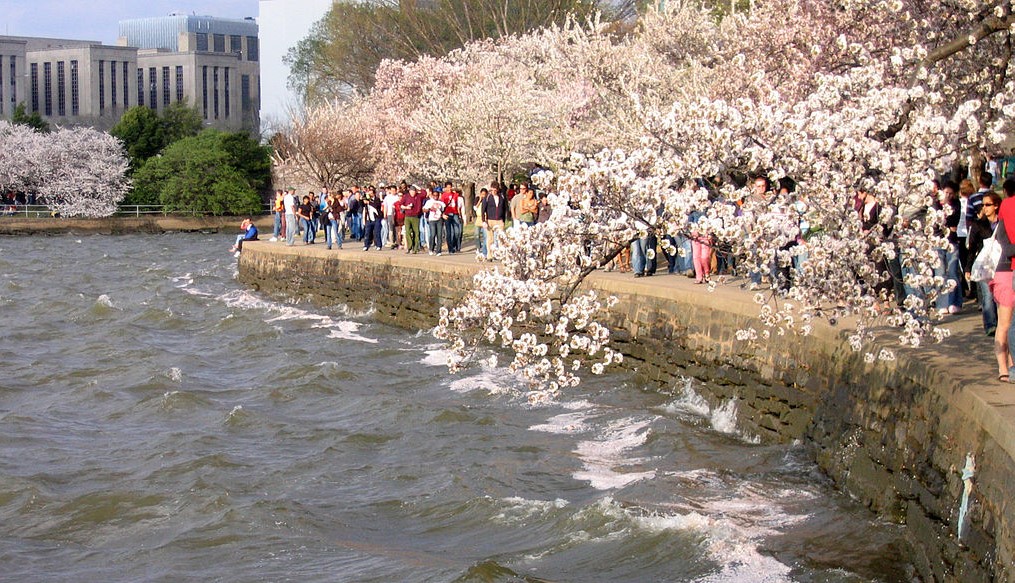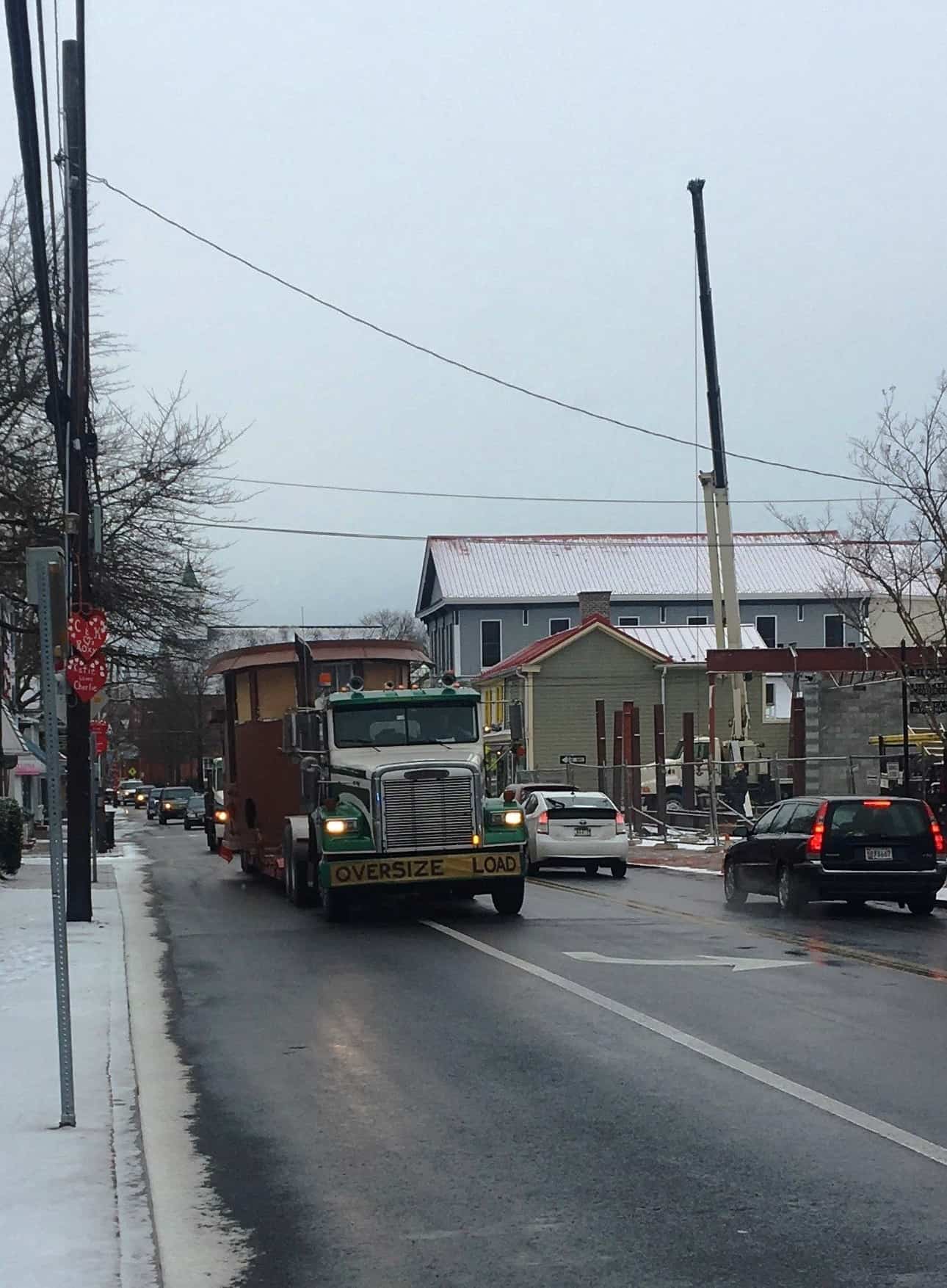Washington D.C.’s Tidal Basin is one of D.C.’s most visited tourist sites, drawing an estimated 1.5 million visitors for the four-week Cherry Blossom Festival alone. Yet the site has been declared one of America’s most endangered historic places by the National Trust for Historic Preservation because of its rising water level and rapidly deteriorating landscape.
In recent years, NPS has urged tourists to “visit” the Cherry Blossom Festival virtually to avoid hazardous conditions and prevent further damages from heavy foot traffic. Tidal flooding renders sections of the path unnavigable on a daily basis, either due to standing water or eroded sediment left on the pathway once the water has receded. It is now almost impossible to access the path with a wheelchair or stroller, preventing many individuals from visiting.
The National Park Service has just approved a series of renovations around the Tidal Basin and West Potomac Park to prevent further damages from rising water levels. The restoration project focuses primarily on the existing sea walls—structures built along waterways to prevent erosion and flooding on shore.
NPS says project steps include increasing the height of the sea walls in these locations an average of five feet and adding additional platforms to support future height increases. Approximately 6,800 feet of sea wall will be raised, and the construction is expected to prolong the structure’s life by 100 years.
The sea walls were originally built in the 1880s, with few renovations since. In addition to their age, the wall’s degradation can be attributed to the sinking ground beneath them, as they sit atop unstable former wetland rather than solid bedrock.
In their compromised condition, the seawalls are now unfit to protect the land surrounding them from rising water levels driven by climate change. In the last century, water levels have risen approximately 11 inches in the Potomac River, which flushes the Tidal Basin with millions of gallons of water at each high tide. The sea walls once meant to prevent flooding are now overwhelmed and the land behind them left vulnerable.
Flooding is not a novel issue in the Potomac River region. The Tidal Basin was established in response to a severe flooding event in February 1881 that rendered the entire southern region of the city inaccessible without a boat. The Basin was intended to serve as a reservoir, and the shores created by the dredge material from its construction formed a barrier between the water’s edge and the buildings beyond. As the rate at which water levels are rising and frequency of significant flood events both increase, however, the Basin can no longer hold the volumes of water it receives.
The increased flooding has been detrimental to the health of the famed D.C. cherry blossom trees. Soil erosion has exposed the root systems of many of the trees along the Basin’s edge, and the increased uptake of brackish water has led to large swaths of trees dying. Moreover, tourists deviating from paved paths to avoid floodwater have compacted what soil is left around the trees, preventing healthy root development and stunting tree growth.
The upcoming project will restore not only the physical structures surrounding the Tidal Basin, but also the relationship between the public and this culturally significant landmark as it becomes accessible once more. Work on the sea walls is slated to begin in the summer of 2024.
-Alaina Perdon




